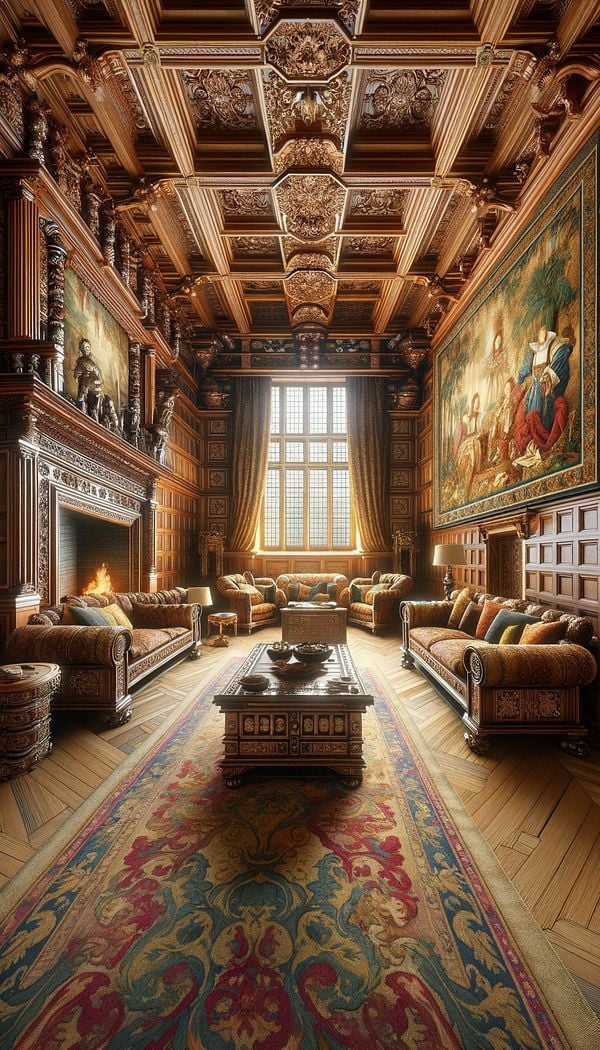What is Elizabethan?
Elizabethan refers to an architectural and interior design style from the Elizabethan era in England.
Description
The Elizabethan style is an architectural and interior design aesthetic from the Elizabethan era, which spanned the reign of Queen Elizabeth I from 1558 to 1603. This style embodies the transition from medieval Gothic architecture to the Renaissance's classicism in England. Notable for its ornate and extravagant features, Elizabethan design includes intricate woodwork, bold geometric shapes, and a mix of Tudor and classical motifs.
Key elements of Elizabethan interior design are heavy oak furniture, detailed paneling, and large tapestries which adorned the walls, reflecting wealth and status. The use of vibrant colors, extensive decorative patterns, and an abundance of textiles characterized spaces, alongside the occasional use of heraldic and mythological motifs in both architecture and furniture design.
The Elizabethan style is appreciated for its craftsmanship and attention to detail. It often featured fine carvings in wood, including the elaborate use of panelling and moulding throughout manor houses and royal residences. Today, it influences home interiors that aim for a traditional, antique, or historically inspired look.
Usage
In a contemporary setting, Elizabethan style is usually emulated through the use of heavy, carved wooden furniture, ornate tapestries, and decorative panelling. It's common in homes that aim to capture a sense of history, nobility, and craftsmanship, whether through a full Elizabethan-inspired interior or through incorporating specific antique pieces or replicas into modern design schemes.
FAQs
-
What period does the Elizabethan style cover?
The Elizabethan style covers the period of Queen Elizabeth I's reign from 1558 to 1603 in England.
-
What are characteristic features of Elizabethan design?
Characteristic features include heavy oak furniture, detailed paneling, tapestries, vibrant colors, heraldic motifs, and extensive use of wood carvings.
-
How can I incorporate the Elizabethan style into a modern home?
To incorporate the Elizabethan style into a modern home, consider adding heavy wooden furniture, ornate tapestries or wall hangings, decorative wood paneling, and elements with classical or heraldic motifs.
Practical Application
To effectively apply the Elizabethan style in a modern home, start by focusing on a few key elements such as an ornate wooden dining table, carved armchairs, or elaborate tapestries. Pair these with rich, warm colors to add depth. Balancing heavy Elizabethan pieces with simpler, modern fixtures and accessories can create a harmonious blend between past and present aesthetics.
-
Architectural Elements199 articles
-
Design Styles478 articles
-
Furniture Types599 articles
-
Historical Periods & Movements150 articles
-
Textiles & Upholstery252 articles
-
Shield BackA shield back is a specific design of chair back that resembles the shape of a shield.
-
Dutch RenaissanceA style of design and architecture that flourished in the Netherlands during the 16th and early 17th centuries.
-
CaseinCasein is a natural, protein-based paint binder derived from milk.
-
CambricCambric is a type of lightweight, closely woven white linen or cotton fabric.
-
Queen AnneAn architectural and furniture design style that originated in the late 17th and early 18th centuries, characterized by its elegant and ornate features.
